RiverNorth Photography
Investment thesis
General Motors (NYSE: GM) continues to develop the electric vehicle business and is committed to plans to capture the market with new models in various car segments.
Despite the crisis, GM will continue to inject significant investments into electric vehicles, both in the opening of new plants and the development of a new product line.
However, the most important factor for GM now is the impending recession in the US and other major markets, which will neutralize the shortage of supply in the market and normalize the abnormally high prices and margin denominated in dollars per 1 car.
Based on new auto market assumptions, we rate the company a BUY.
The situation of the car market
The automotive industry continues to face a shortage of semiconductors, which creates a fairly large imbalance between supply and demand. According to FREDauto sales in the US were consolidated at nearly 14 million units.
COLD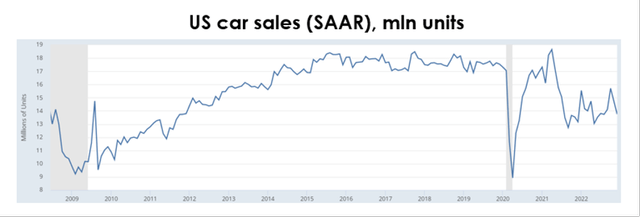
From 2014 to 2020, typical US auto demand was about 17 million cars. About 15 million cars were sold in 2021. As of May 2022, this figure has been slowly recovering to 13.8 million units (SAAR, the seasonally adjusted annual rate), much higher than in December 2021, when it was 13.2 million units, but is still far from the local peak of 15.5 million units in January 2022. According to our calculations, the current annual unmet demand for cars in the US is 2-2.5 million cars.
COLD
A similar situation is being observed in the US used car market, although price growth is slowing sharply.
COLD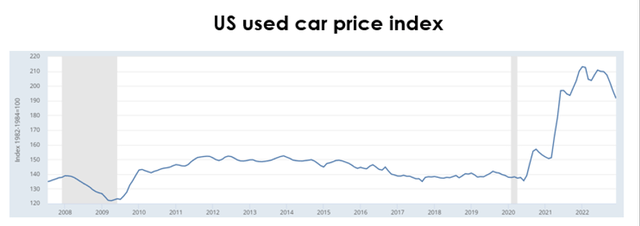
The situation is different for the new and used car markets. As automakers struggle with semiconductor shortages and production recovery, new players are emerging in the used car market. As US real incomes decline while utility bills, mortgage and loan interest rates, and fuel prices rise, individuals are starting to sell their cars.
At the same time, new car producers, such as GM, are moving forward with their supply chain and semiconductor situation. But because new cars are still scarce on the market, automakers continue to pass the costs on to consumers, albeit at a more moderate pace. So we expect the dollar margin for each new car to continue to slowly decline until the semiconductor shortage in the industry is fully resolved.
GM financial results
Auto demand in the US has increased, which is reflected in the decline in the ratio of auto inventory to sales from 0.666x in 3Q 2022 to 0.556x in 4Q 2022. But it was not matched by the recovery of car production, which caused car prices to rise further to a level higher than our expectations. Based on the latest data, we’ve increased the average selling price of a car in 2023-2024 from $39.5K to $41.5K.
As a result, we are raising GM’s revenue forecast from $186.9 million (+19.2% y/y) to $195.2 million (+24.6% y/y) by 2023 and from $201.8 billion (+7.9% y/y) to $211.6 billion (+8.4% y/y) by 2024.
Invest Heroes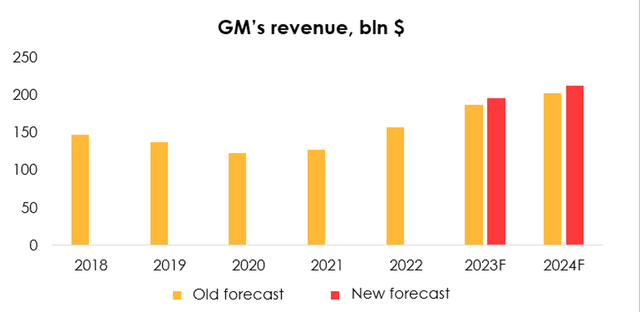
Adjusted car prices and lower material cost forecasts have led to a revision of GM’s gross cost-to-income ratio from 83% to 81% for the forecast period.
As a result, we are raising the EBITDA forecast from 23.47 billion (+8.6% y/y) to 23.6 billion (+9.3% y/y) for 2023 and from 23, 5 billion (+0.1% y/y) to 25.2 billion (+6.7% y/y) by 2024.
Invest Heroes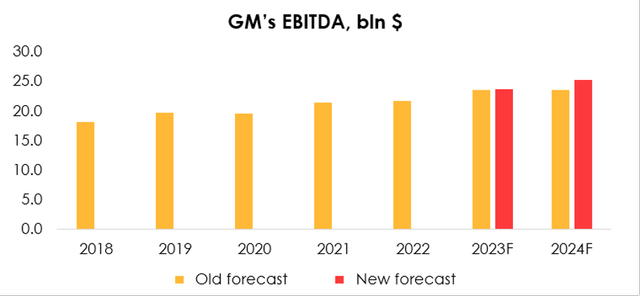
Evaluation
The stock’s fair price is $58. Based on the new assumptions, we are assigning a BUY rating for the stock. The rise is +42%. We value the company based on 2023 results using the EV/EBITDA multiple method.
Invest Heroes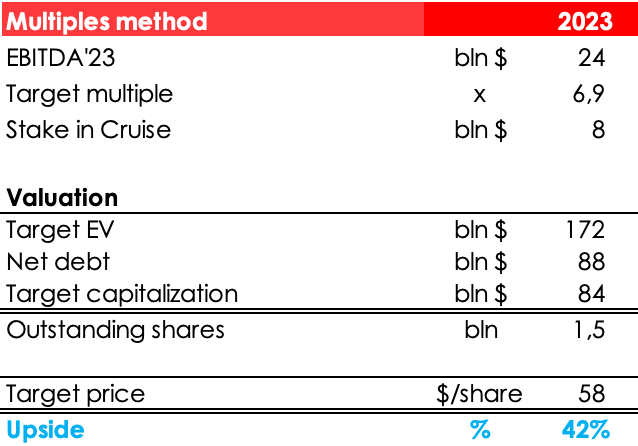
conclusion
High car prices and lower steel prices are helping automakers increase margins per car. We expect these trends to continue in the future, as the gap between supply and demand is still very high.
A key risk for GM is a potential recession in the US, as well as a slowdown in buying activity amid rising borrowing rates.
Due to the high volatility of the market, we recommend forming a position in several steps.


